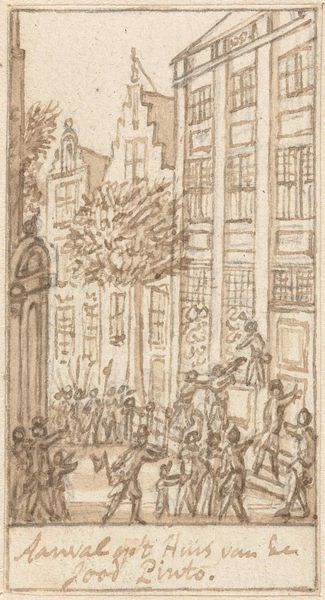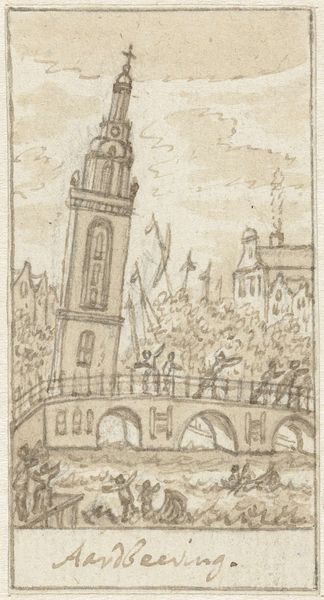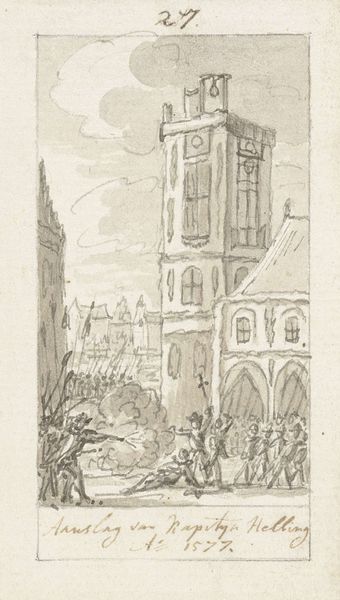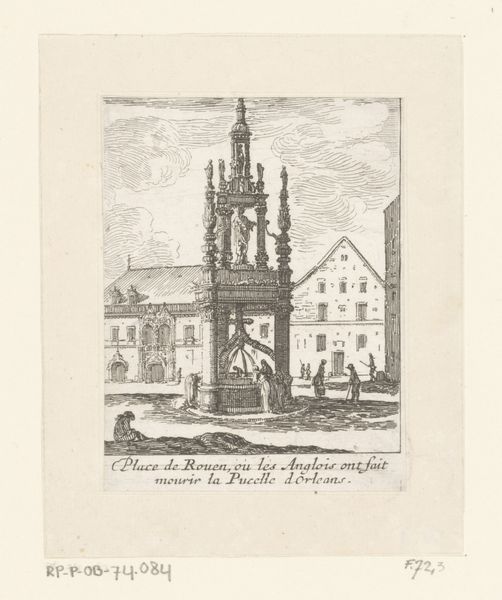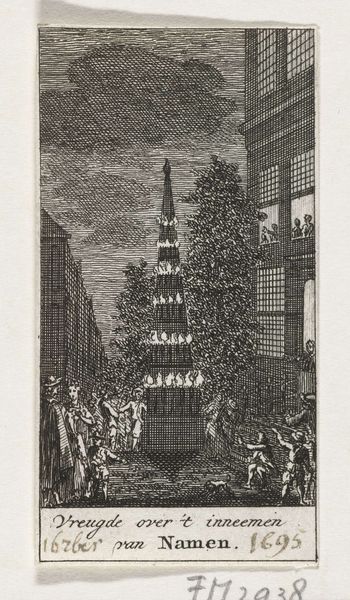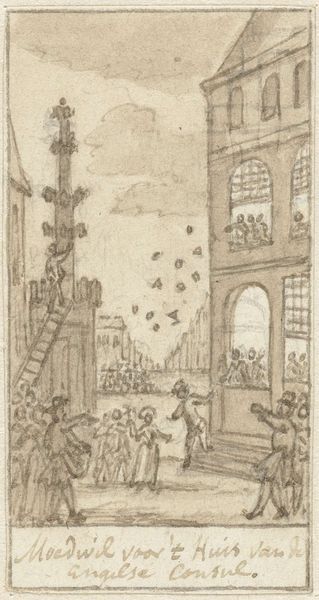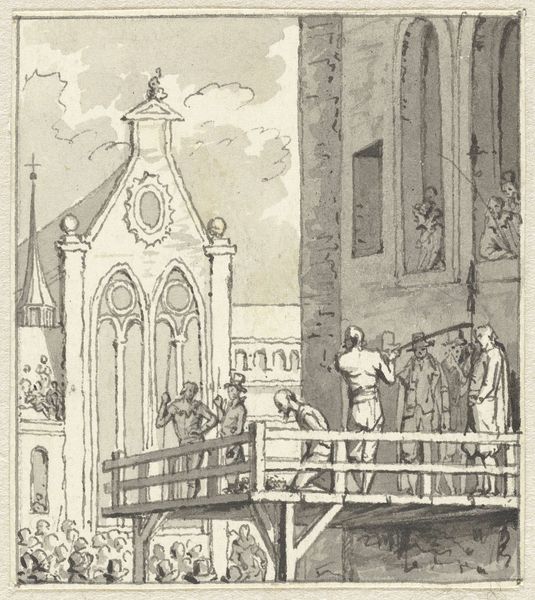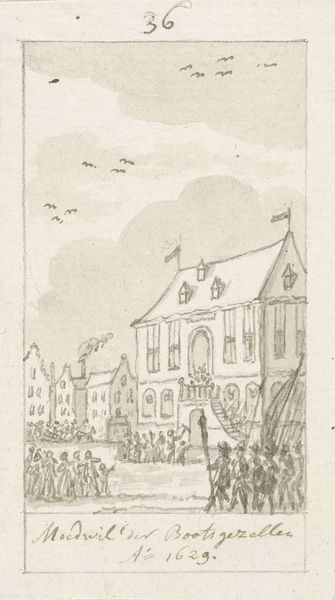
drawing, paper, ink
#
drawing
#
baroque
#
paper
#
ink
#
cityscape
#
genre-painting
Dimensions: height 82 mm, width 42 mm
Copyright: Rijks Museum: Open Domain
Curator: I find myself drawn to the sketch-like quality, this seemingly casual capturing of a grand public celebration. Editor: That's precisely what fascinates me. This is "Vreugde over het innemen van Namen, 28 september 1695" (Joy over the Capture of Namur, 28 September 1695) by Simon Fokke. It’s estimated to have been made sometime between 1722 and 1784. It is currently housed here at the Rijksmuseum. The medium is ink on paper, which, of course, accounts for that immediacy. Curator: Indeed, the choice of ink on paper lends a raw, almost journalistic feel to the work. We see the skeletal buildings and the blurred people forming a celebratory scene in the city square. Editor: This work underscores how the act of memorializing historical events shifted, becoming democratized. No longer were grand oil paintings the only conveyors of history, these public celebrations were being captured and disseminated more widely thanks to technologies like drawing and printmaking. Curator: It brings attention to how meaning is constructed through material engagement. The quick strokes of the ink imply movement, and life… celebrating a political victory. The monument erected becomes not just a structure, but an artifact that allows the social structure to be seen. Editor: It highlights the ephemeral nature of victory celebrations, focusing on a temporary monument erected in the aftermath. In many ways this small, modest drawing offers a larger view of national pride being actively manufactured and enjoyed, particularly during times of territorial expansion. This contrasts beautifully with the physical permanence of the state, which, like a painted portrait, demands stillness and reverence. Curator: It invites us to think about how fleeting events, rendered with humble materials, contribute to a more complex historical record. And of how drawing allowed artists, and, by extension, ordinary people, to participate in constructing and reflecting upon history. Editor: Absolutely, a small ink drawing on paper reminding us of the vibrant and very loud public life taking place during a specific moment in time.
Comments
No comments
Be the first to comment and join the conversation on the ultimate creative platform.

